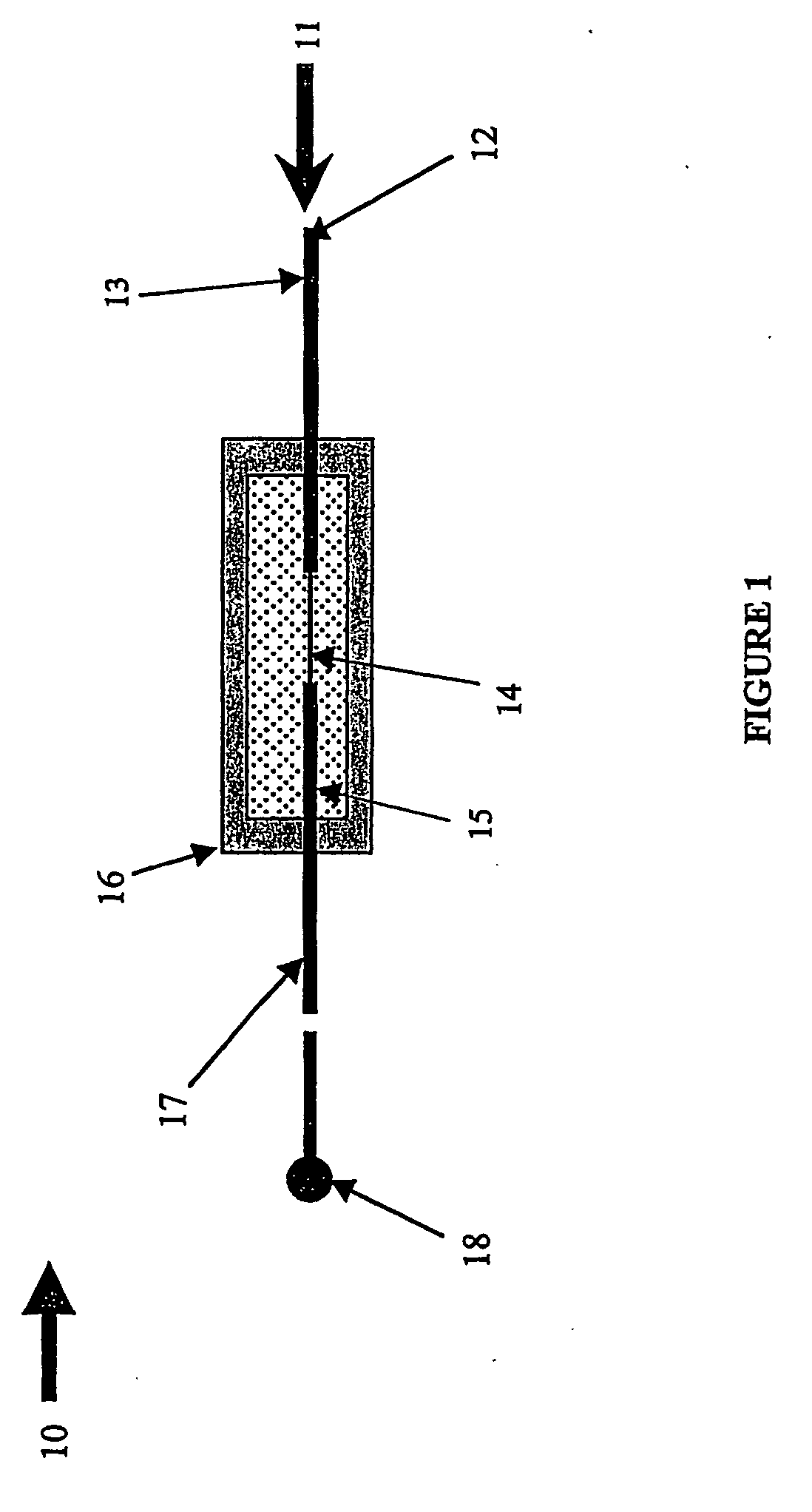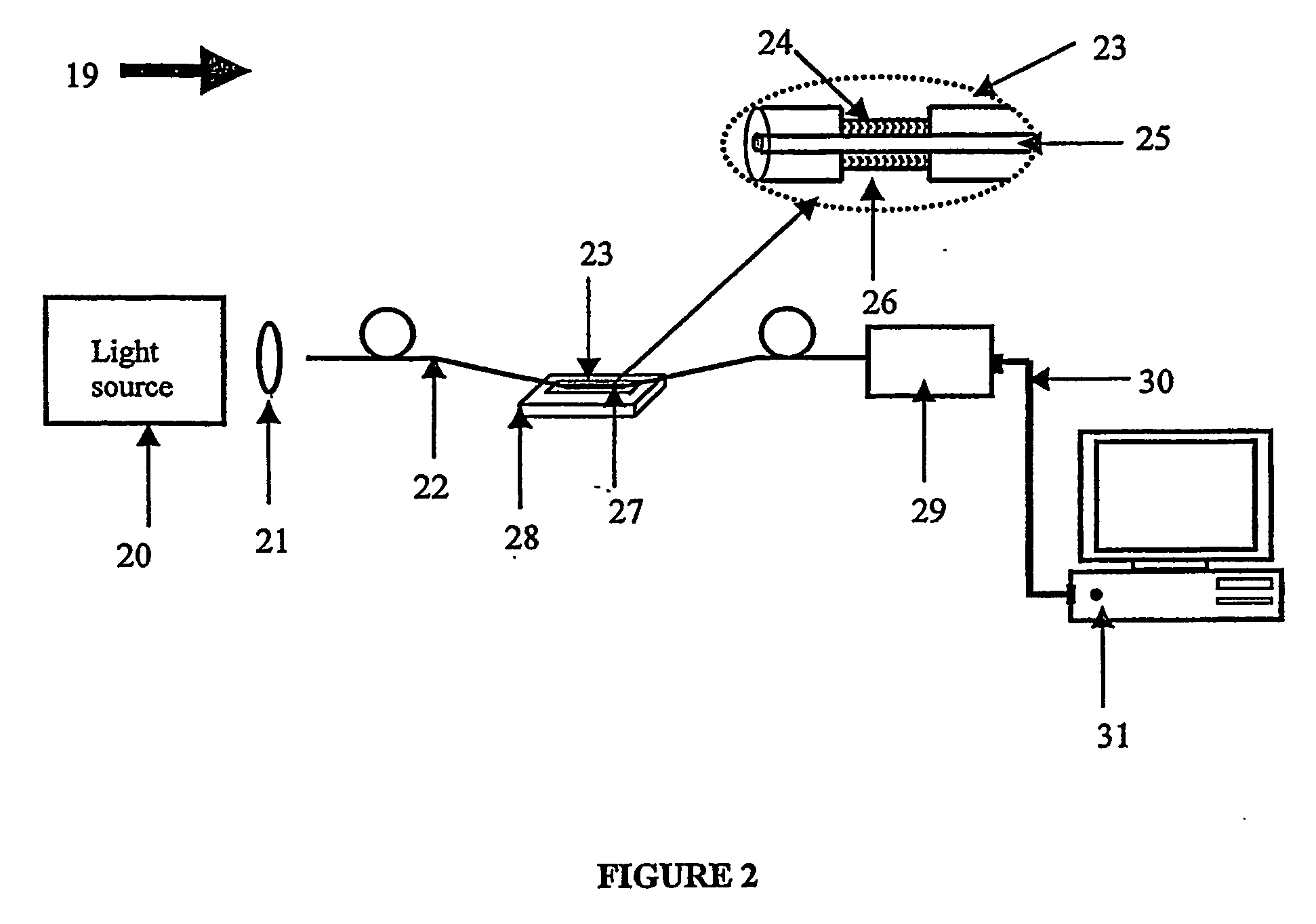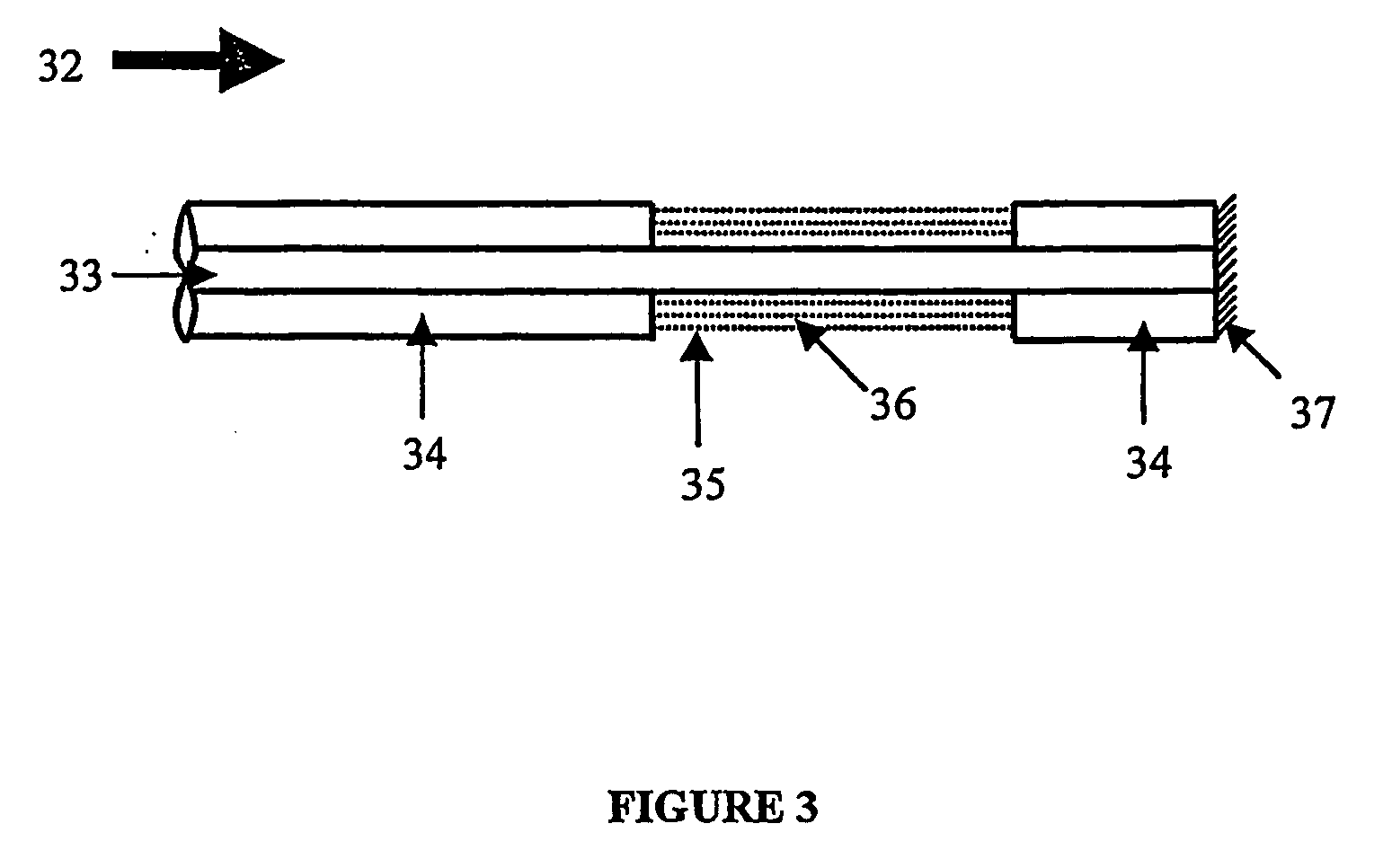Fiber optic bio-sensor
a biosensor and fiber optic technology, applied in the field of fiber optic biosensors, can solve the problems of difficult quantitative monitoring of bacterial activity, time-consuming, and significant decrease in tooth and gum diseas
- Summary
- Abstract
- Description
- Claims
- Application Information
AI Technical Summary
Benefits of technology
Problems solved by technology
Method used
Image
Examples
example 1
Staphylococcus aureus
[0101]Staphylococcus Aureus is a pathogenic bacterium that causes significant morbidity particularly to immune compromised individuals. It is also a common food borne bacterium. Nosocomial infections due to this bacterium create problems that are increasing in severity and are a financial and health liability in the clinical environment. It has become important to develop a rapid detection system for Staphylococcus aureus and in particular methicillin resistant Staphylococcus aureus.
[0102] A conventional growth and indication medium for the detection of Staphylococcus aureus is mannitol salt agar, which is both a selective and differential growth medium. It is used to differentiate pathogenic Staphylococcus species from non-pathogenic members of the genus Micrococcus. The medium typically contains about 7.5% salt thus selecting for organisms that are able to tolerate the presence of high levels of salt. This medium also contains an indicator, phenol red, which...
example 2
[0104] The infectious agents of tuberculosis and leprosy belong to the same bacterial genus, Mycobacterium. Infection by Mycobacterium tuberculosis causes fever, cough, loss of energy and weight loss and serious lung damage. Leprosy, an infection of the skin, peripheral nerves and mucous membranes is caused by Mycobacterium leprae. The serious nature of these mycobacteria makes the need for a rapid diagnosis necessary to ensure appropriate therapeutic treatment can be initiated as early as possible.
[0105] A sample containing Mycobacterium leprae and Mycobacterium tuberculosis was placed in contact with the sensor element of the present system. Carbol fuchsine was dispersed in the outer coating of the sensor element. Reaction of carbol fuchsine with lipids of the mycobacterium cell wall produced an absorption pattern which was distinctive and indicated the presence of the mycobacteria.
example 3
Environmental Sampling
[0106] General bacterial contamination in the environment may be identified using the system of the present invention. Reaction with general dyes such as methylene blue and features of bacteria such as the cell wall may produce an optically or spectroscopically detectable indicator.
[0107] A contaminated sample with mixed bacterial population was placed in contact with the sensor element of the present invention. A general absorption pattern was detected by spectroscopic methods to indicate the presence of multiple bacterial organisms.
PUM
 Login to View More
Login to View More Abstract
Description
Claims
Application Information
 Login to View More
Login to View More - R&D
- Intellectual Property
- Life Sciences
- Materials
- Tech Scout
- Unparalleled Data Quality
- Higher Quality Content
- 60% Fewer Hallucinations
Browse by: Latest US Patents, China's latest patents, Technical Efficacy Thesaurus, Application Domain, Technology Topic, Popular Technical Reports.
© 2025 PatSnap. All rights reserved.Legal|Privacy policy|Modern Slavery Act Transparency Statement|Sitemap|About US| Contact US: help@patsnap.com



